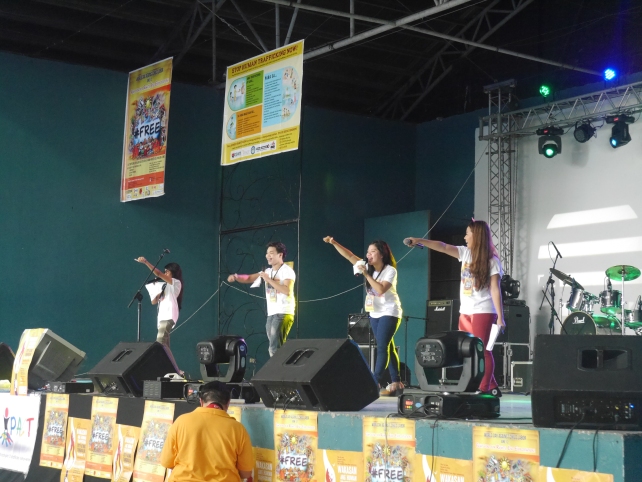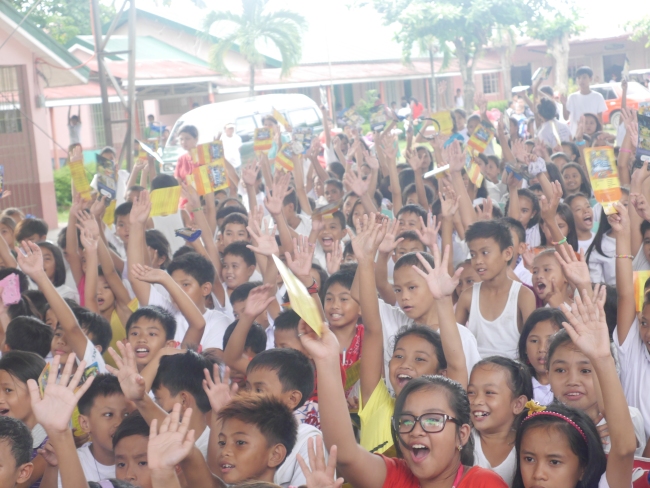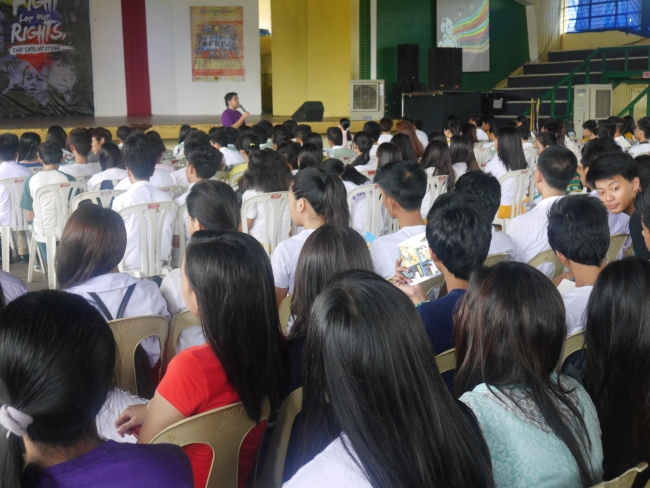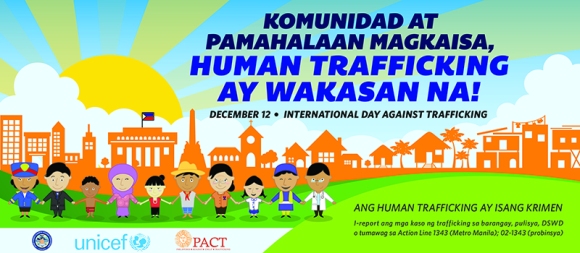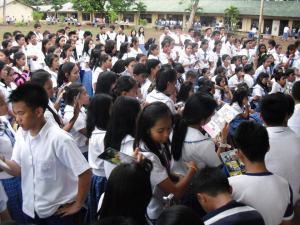Children and youth from the areas of Tanza, Cavite; Cabanatuan, Nueva Ecija, and Santa Rosa, Laguna have launched a campaign against child trafficking for labor exploitation.
The campaign titled #FREE , an acronym for “Fight for our Rights, End Exploitation,” aims to change the culture and perceptions within the communities through informative but equally creative and artistic activities.
#FREE campaign also calls for the prosecution of violators of anti-child labor laws and the Anti-Child Trafficking Law, which considers child trafficking for labor exploitation as a crime.
Christian Faith Antonio, President of the PACT youth organization, I Against Child Trafficking (IACT) told more than 500 high school students of Cabanatuan City that Region III to which they belong have the most number of child laborers. “It is sad that we may have within our communities many neglected children, among them child laborers. Consider yourselves blessed because you enjoy basic needs and are able to attend school. But you should not be complacent. We must help the least of our brothers and sisters and do something to prevent this problem,” Antonio said For her part, youth leader
Kristal Almodovar of President of I Participate Against Child Trafficking or IPACT said that in her City in Santa Rosa, some children can be seen begging in the streets or scavenging at the sacrifice of their education. “The problem cannot be ignored. We must do something to address this,” Almodovar appealed
PACT-Youth groups launched #FREE campaign from June 25-27 through a concert and symposia to gather the support of students from Tanza, Cabanatuan City, and Santa Rosa City.
PACT National Coordinator Maria Salome Ujano, programs with corresponding budget must also be institutionalized for the prevention and better response to the child trafficking for labor exploitation.
There are approximately 3.2 million child laborers in the Philippines working in the agricultural, industrial and service sectors with 3 million of them in the worst forms of child labor,according to a survey conducted by the National Statistics Office and the International Labor Organization in 2011.
PACT believes that most of the victims of child labor are victims of “child trafficking for labor exploitation.” However as of May 2014, out of approximately 129 trafficking cases with convictions, only one case is known to involve trafficking for forced labor or labor exploitation.
Children victims of labor exploitation experience inhuman living and working conditions: meager salaries; work that is too heavy, difficult or dangerous considering the mental and physical capabilities of children; and lack of protection for safe conditions of work. Ujano emphasized that it is the parents’ primary responsibility to ensure the survival and development of their children.
“Parents or families with no sufficient means to provide for their family’s survival must be helped by the government, not by the child. The survival of the Filipino family and the economy of the communities should not be placed on the fragile shoulders of the Filipino child.”
Under RA 7610 better known as the Anti-Child Abuse law as amended by RA 9231, children below 15 years old are not allowed to work except when working in a family enterprise or in public “entertainment or information” where the child’s participation is absolutely necessary. He or she is not allowed to work for more than 20 hours per week or more than four (4) hours per day. Meanwhile, children between 15 to 17 years old, are not allowed to work for more than 40 hours a week and no more than 8 hours per day.
Children who work must also be ensured be under the direct supervision of their parents or their guardian, their lives, safety, health and morality are not put at risk and their education not put on hold because of their work. PACT is a network of anti-child trafficking and child rights advocates in 53 areas nationwide.
PACT, in partnership with PACT children and youth groups such as the Tanza Organization Against Child Trafficking (TO ACT); IACT of Cabanatuan, Nueva Ecija; I Participate Against Child Trafficking (IPACT) of Santa Rosa, Laguna; and ACT for CHILDREN of Davao City leads the #FREE campaign. Similar anti-child labor activities were also conducted in Bacolod, Negros Occidental; Tacurong, Sultan Kudarat; and Malaybalay, Bukidnon.
Terre des Hommes Netherlands was the main sponsor of the event. Other supporters include: the Department of Labor and Employment, the LGUs of Santa Rosa, Laguna, Cabanatuan, Ecija; Tanza, Cavite;Jaen, Nueva Ecija; and the Province of Laguna; the Department of Education Divsion of Santa Rosa, Holy Rosary College (Santa Rosa City), Wesleyan Univerity of the Philippines, Punta Elementary School, Enchanted Kingdom, I Love Santa Rosa, Ford Cabanatuan and individual supporters.

